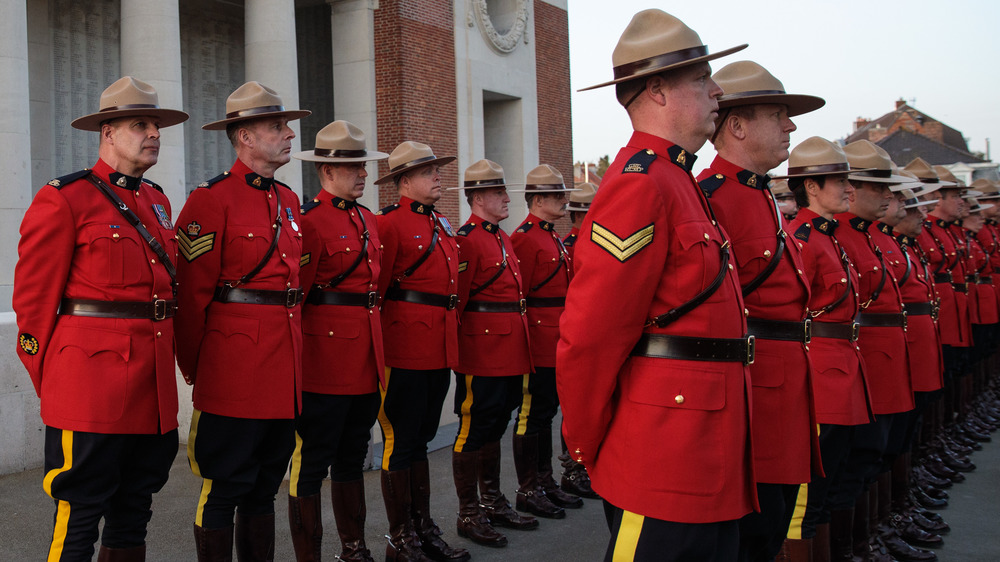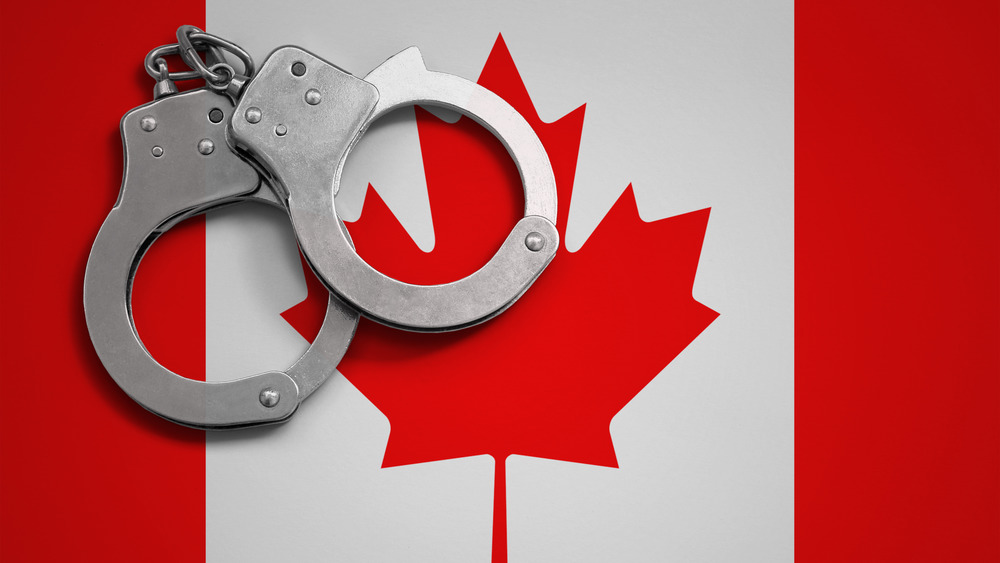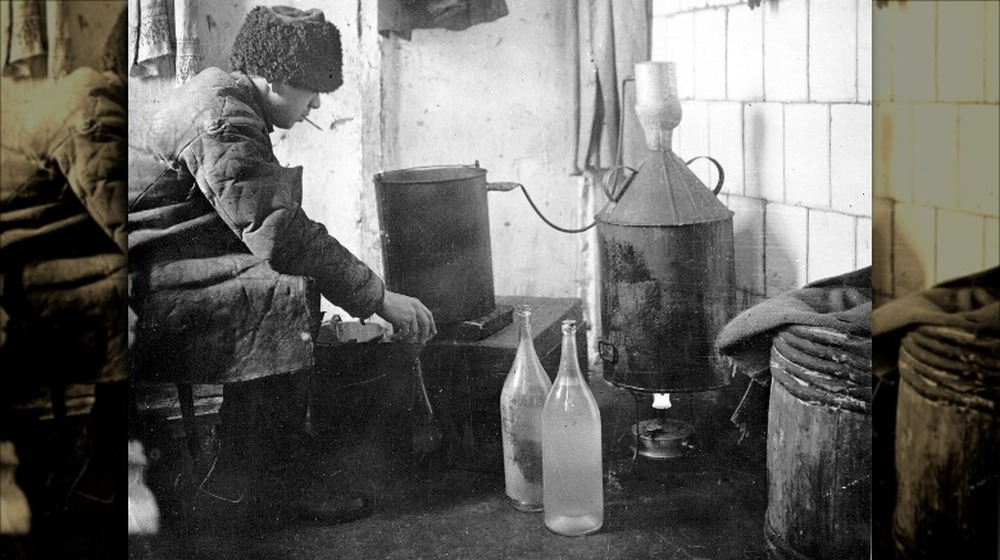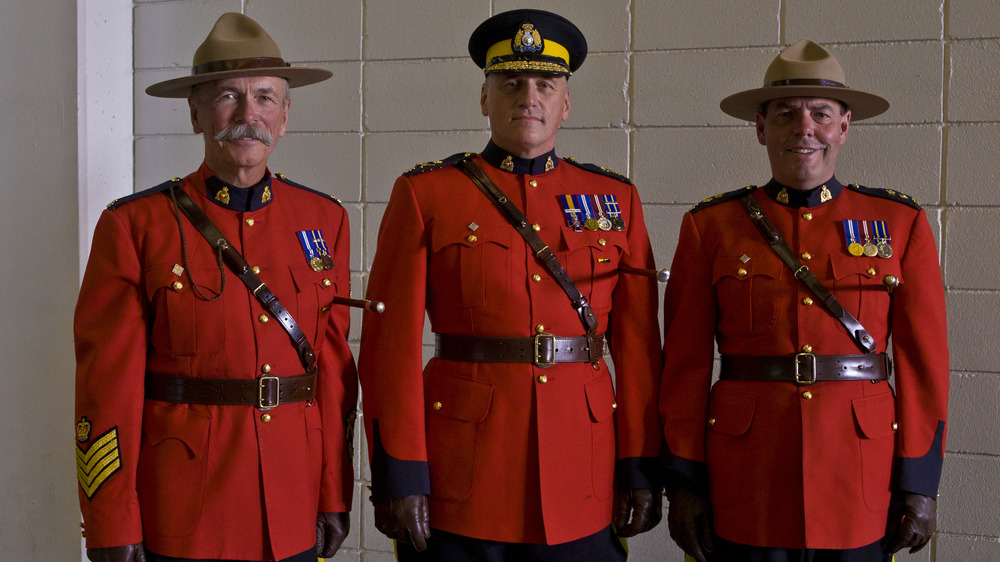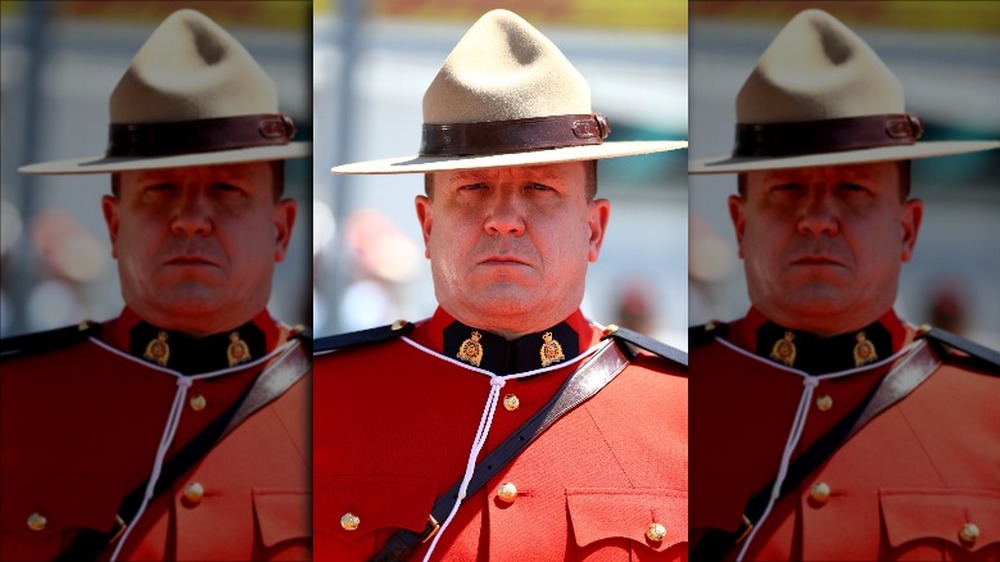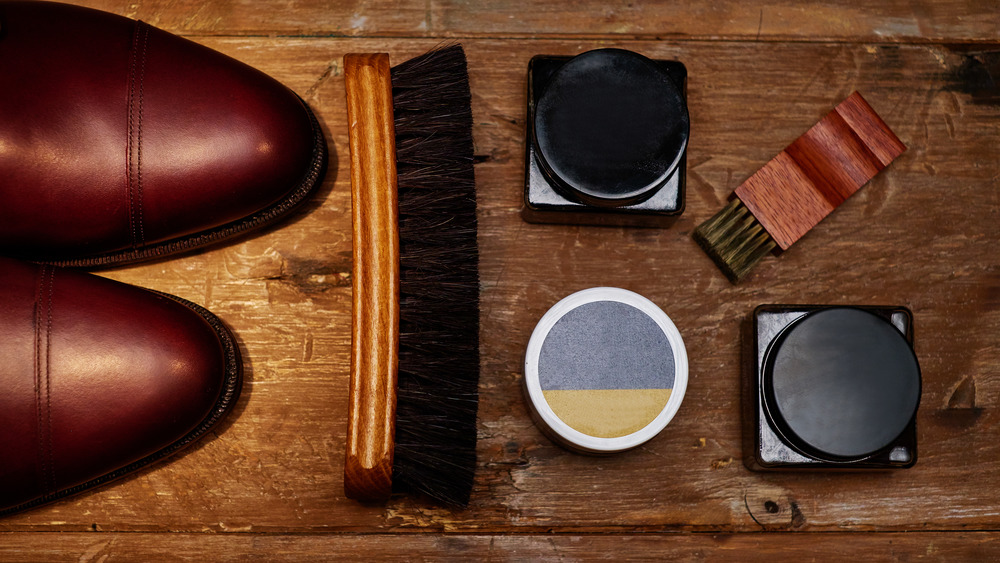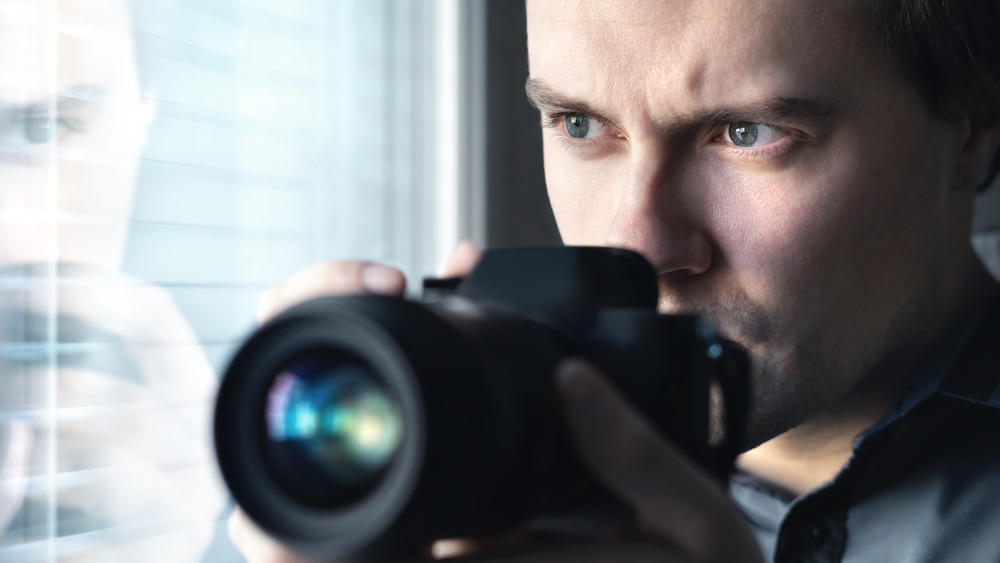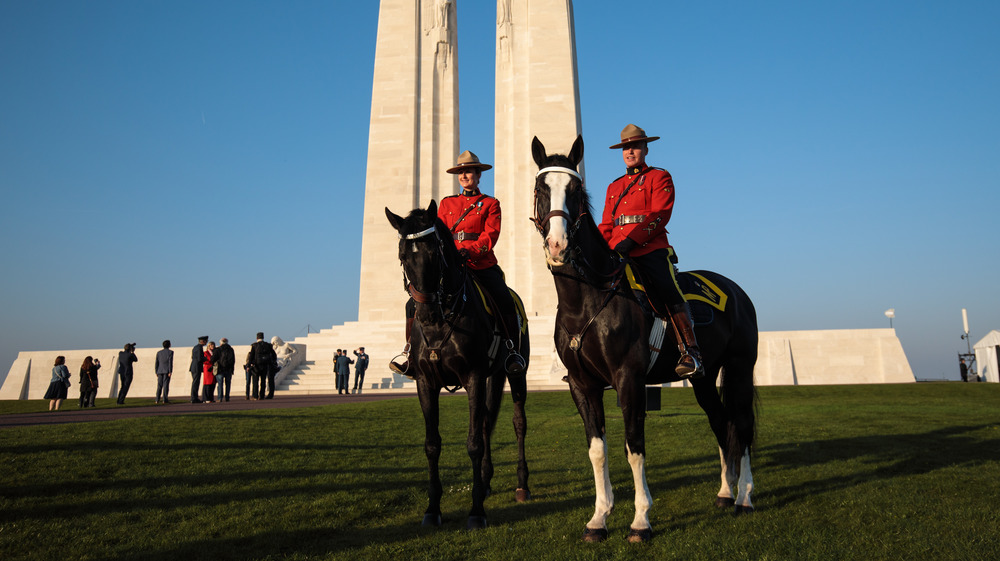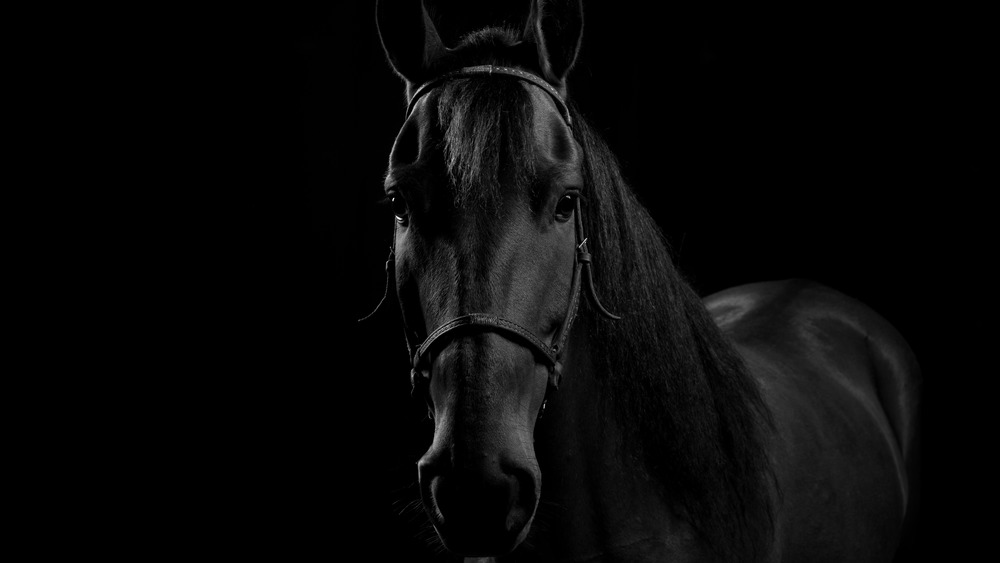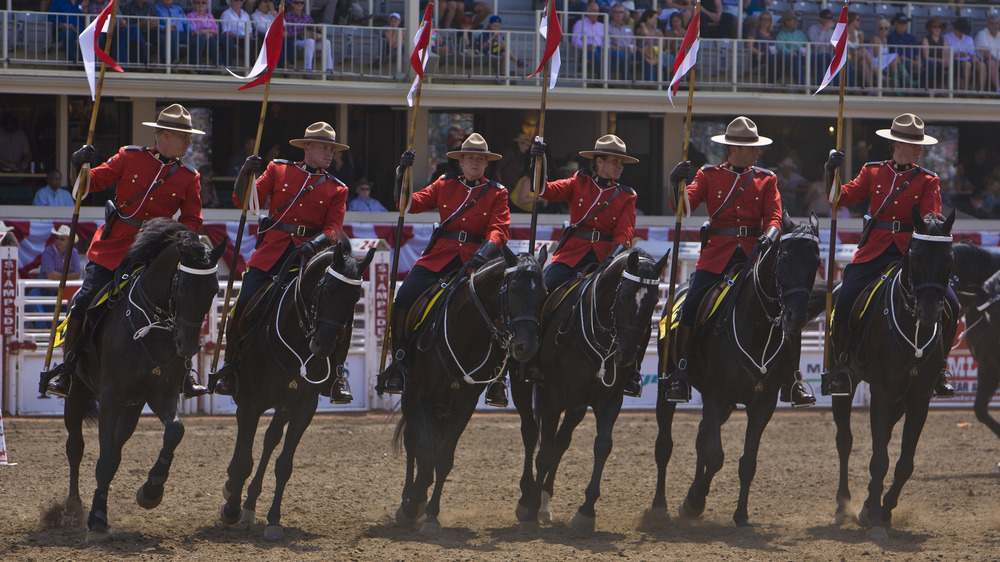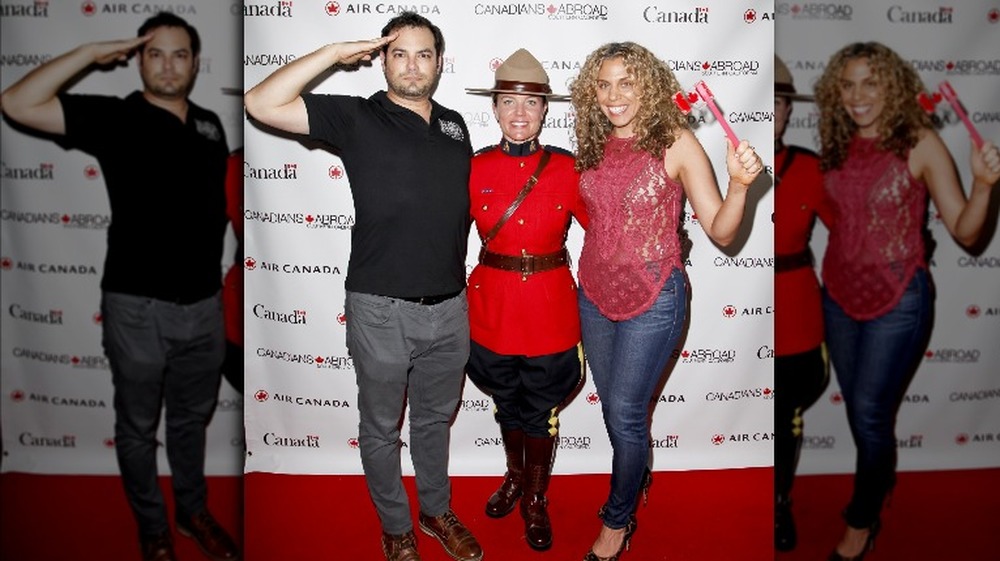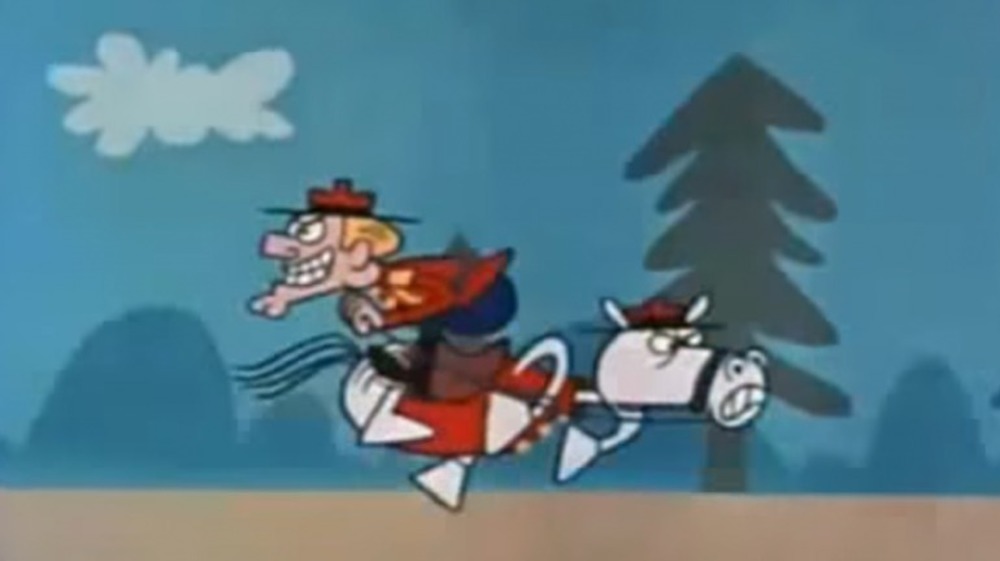The Wild History Of The Canadian Mounties
Even if you've never set foot in the Great White North, as it's sometimes called, you're sure to have a picture in your head of what makes Canada, well, Canada – vast expanses of pristine wilderness, cool multicultural cities, poutine, maple leaves, and, of course, Mounties in their red jackets and massive Stetson hats. But beyond being iconic representations of Canada, what the heck are the Mounties, anyway, and what do they do all day?
Seeking to defend all Canadians from the 1800s on — the Mounties were originally founded to help protect First Nations people from exploitation and employed their first female special constable in 1900 before welcoming regular policewomen in 1974 — the Royal Canadian Mounted Police (RCMP) investigate crimes, do high-level forensics work, and defend Canada's internal security.
The history of these intrepid defenders of Canadian peace and justice is anything but boring — from their wild and wooly origins in the lawless Western territories to their modern pursuit of terrorists, the Mounties surely live up to their motto of "Maintiens le Droit" ("Uphold the Right") every day ... and yes, they almost always get their man!
What are the Mounties, anyway?
Created by an act of the Canadian Parliament in 1873, the Mounties were originally meant to be the official police force of the North-Western Territories. They were first known simply as the North-West Mounted Police, though today, they're formally known as the Royal Canadian Mounted Police, as their official site notes.
After proving their mettle policing the vast territory of the Northwest, the force's duties expanded. Within a year, they were establishing forts throughout the relatively unsettled western territories, and when the Klondike Gold Rush of 1896 drew tens of thousands of prospectors to Canada's Yukon, the Mounties were there to maintain order, as The Canadian Encyclopedia relates.
The force helped maintain domestic peace during World War I, and after the war, the Canadian Parliament made the Mounties a federal policing agency on February 1, 1920. Today, the Mounties have security and defense duties that include guarding against terrorism, protecting government buildings, investigating federal crimes, and more. They operate the Canadian national forensics labs, according to the Encyclopedia Britannica, and provide training for other law enforcement organizations. The Mounties are also the provincial police force for every province except Quebec and Ontario.
The Mounties were originally formed to deal with whiskey bootleggers
The relatively unsettled, wild regions of Canada's Northwest were prime territory for scurrilous American hooch bandits in the late 1800s. Driven by heavy taxes on whiskey, many moved their operations north of the border, causing trouble for their law-abiding Canadian neighbors and First Nations people alike, as historian Stephen Moore recounts.
After Canada acquired what was known as Rupert's Land, a massive tract formerly controlled by the Hudson's Bay Trading Company, more settlers moved into what had previously been an area sporadically populated by white fur traders and native communities, according to The Canadian Encyclopedia. Peaceful coexistence was replaced by a series of increasingly tense and bloody conflicts, often spurred by bootleggers operating within First Nations borders and exploiting the locals, as The British Empire recounts. One of the North-West Mounted Police's initial duties was to track down and stop the whiskey trade in the region.
According to Glass with a Twist, the Mounties' anti-alcohol duties only intensified when US Prohibition sent both average drinkers and bootleggers north of the border to manufacture, sell, transport, and drink up whatever they could. In 1924, at the height of Prohibition in the United States, more than two thirds of the whiskey found in the US was brought over from Canada. As Smithsonian Magazine notes, the alcohol trade at the time was a complex mass of legal, quasi-legal, and totally lawless production, transport, and smuggling — and the Mounties were in charge of sorting out the legit businesspeople from the criminals.
The Mounties are technically a royally sanctioned British military unit
Canada has a complex relationship with the British Empire — it's an independent country with its own political system and leaders, but it's also a member of the Commonwealth of Nations, a group of former colonies that still maintain close cultural, political, and trade ties. Heck, Queen Elizabeth even appears on Canadian coins.
So it shouldn't come as a huge surprise that the Mounties are the Royal Canadian Mounted Police. But this designation didn't get added to the name until 1904, according to the Encyclopedia Britannica. That's when Britain's King Edward VII granted the North-West Mounted Police a royal appointment, making them part of the British Commonwealth military and policing hierarchy. The British Empire notes that this accolade was given as a result of the service of many Mounties in the Boer War of 1899-1902 in South Africa.
Today, the Mounties do have international duties — they've sent representatives on UN peacekeeping missions and are part of Interpol, as their website relates, but their focus is mainly on maintaining domestic security. Still, the Mounties occasionally perform at Commonwealth and Empire events today, even taking part in the Changing of the Queen's Guard, as the UK government details.
The Mounties' red coats were chosen for historical reasons
Those signature bright red Mountie coats didn't happen by accident — they're a calculated choice made very early in the Mounties' history.
The color is a targeted nod to Canada's British alliances and the Revolutionary War Redcoats. When the Mounties were policing the North-West Territories (the new name for Rupert's Land), several surveys noted that the locals — including mixed-race populations called metis and First Nations peoples — associated law and order with British soldiers, and British soldiers were associated with red coats and dark trousers, as The Canadian Encyclopedia details. So the red coats and deep navy trousers were quickly adopted as the force's uniform.
Plus, the scarlet shade was a way to mark them apart from US military and police forces, who typically wear navy blue. As Tourism Regina points out, the coats even have their own name: the Red Serge.
While the red jackets have never changed hue, other parts of the uniform have been updated over the past century and a half. The British Empire relates that the original Mountie uniform in the North-West Territories added a brown belt, bandolier, black boots, and white helmet to the red jacket, along with whatever dark trousers the Mountie had available. Today, while the jacket and brown belt remain, the boots are brown and the helmet has been replaced by a matching brown Stetson cowboy hat.
Mountie uniforms take a ton of maintenance
Those bold colors and gleaming boots aren't easy to keep looking spiffy. Mountie regulations specify that their riding boots have to be shined for 25 hours before they're fit to wear, according to Tourism Regina, and the hats have to be specially cleaned and blocked.
Cadets have to apply 20 to 40 coats of polish to their new boots before they're considered ready, as Insider relates — it's something of a rite of passage among new Mounties to get their boots just right. The Star points out that Mounties typically pay to replace their own shirts, gloves, and so on. However, an act of the Queen means that boot polish, at least, is provided free of charge.
Each Mountie has several uniform changes, typically wearing plainclothes or a simpler red jacket, but the Red Serge for dress occasions is something special. Insider notes that a team of 20 tailors in Quebec is responsible for producing the custom wool jackets, and the Mounties' tall leather boots are also custom-made. As The Star notes, it costs about $3,500 to outfit a Mountie for duty.
The Mounties' duties used to include spying
Starting in World War I, the Mounties were responsible for espionage and counter-espionage, as The Canadian Encyclopedia points out. They attempted to maintain peace within Canada while many of its young men were serving on the European battlefront and then went back to shutting down bootleggers upon the end of hostilities. They picked up their spying duties again during World War II, and this time, they continued into the Cold War era.
Things took a turn for the Big Brother in the 1960s, when the Quebecois separatist movement started gaining momentum. Instead of looking for Russian interference in Canadian affairs, as The Canadian Encyclopedia relates, the Mounties were sent on undercover missions to try to shut down domestic unrest. Plus, in parallel to the emergence of McCarthyism and the Communist hunts in the United States, Canada also tried to infiltrate Communist and socialist groups within its borders, sending Mounties undercover for years, as one spy detailed to the CBC in a 1963 interview.
Even today, after the 1984 formation of the Canadian Security and Intelligence Service, the Mounties still engage in some clandestine operations. The Canadian Intelligence Resource Centre Archives highlights that the RCMP takes the lead in investigating espionage and terrorism within Canada, in addition to providing intelligence gathering and analysis for other law enforcement agencies and operations.
Before 1966, all Mounties were required to know how to ride a horse
Those yellow stripes on the Mounties' trousers aren't just there for style — they're a nod to the unit's cavalry history. Since their inception, Mounties have been associated with horses — and that continued through to the middle of the 20th century.
At the beginning, horses were the only way to get around — it was specified at the Mounties' founding that at least one third of the force was to consist of mounted police, according to The British Empire. With such a huge patrol area to cover, it's no wonder that any Mountie who could get himself a ride did so, and soon, their remarkable horsemanship was becoming the stuff of legend.
Even when they became a modern police force, all Mounties were still required to know how to ride. The use of horses for regular duties fell off in 1936, but Mounties were all still required to know how to ride until 1966, according to Horse Canada.
Horses weren't the only unusual means of transportation, though. The RCMP themselves note that they still performed regular dogsled patrols until 1969.
The Mounties have their own horse-breeding program
Although the Mounties originally started with whatever horses they could get their hands on, often broncos, they've had specialized breeding programs since 1875, with today's efforts founded in 1943, as International Museum of the Horse details.
Since 1938, all Royal Canadian Mounted Police horses have had to be black, all due to the whim of one guy. Assistant RCMP Commissioner S.T. Wood admired the household guard of King George VI on a trip to England, particularly how nice the bright red jackets looked atop black horses. When he became full commissioner, he decided that every single horse had to be black to make sure that the Mounties were aesthetically worthy of their royal title, according to Horse Canada.
Mountie horses have to meet very strict size and appearance criteria. They're all black, save for the occasional white marking, between 16 and 17.2 hands tall (5'4" to 5'10" at the shoulder), and have a particular flowing gait. The horses are a cross between thoroughbreds and Hanoverians, as Horse Canada points out, and they're all bred on one farm in Pakenham, Ontario.
Horses are so key to the Mounties that they get their own bios on the RCMP website.
A special Mounties unit performs musical horse rides
One of the hardest Mounties units to enter is the Musical Ride, which features highly trained horses and riders performing choreographed routines. The tradition dates back to at least 1886, as the RCMP website recounts. The first rides were the result of early Mounties training to ride better in harsh conditions — and getting bored and competing among themselves to do tricks on horseback. During harsh Canadian winters, snowed in at various forts, the Mounties would practice and perform before going back on patrol in spring.
Horse Journals notes that the Mounties started doing public performances around the same time they got the "royal" designation in 1904, traveling to several provinces to demonstrate their skills. According to Horse Canada, the Musical Ride became an official permanent annual event in 1961.
Today, the Musical Ride tours and performs worldwide, giving shows at about 40 venues a year, according to the RCMP. There are also free demonstrations at Mountie headquarters and at the equestrian training facility every June. The Musical Ride troupe is the only division of the Mounties still required to know how to ride, and the 32 members – 64, if you count human and equine – are among the most celebrated of the force. The horses actually have a longer duty cycle than the humans, being trained from birth to participate. The RCMP relates that eager young equine recruits often perform several roles over 20 to 25 years of service.
Disney used to be the Mounties' brand manager
The Mounties are so iconic that their likeness is trademarked — and you have to pay a licensing fee to use their image, as The New York Times points out. And according to Tourism Regina, until 2000, those deals were actually negotiated and managed by the Walt Disney Company.
According to the Canadian Broadcasting Corporation, the Mounties' headquarters got fed up with inappropriate uses of their likeness in the early 1990s, when it seemed like a flood of weird Mountie homages were cropping up — everyone from pro wrestlers to adult film stars were wearing the Red Serge and Stetson. Conscious of brand opportunities from the very beginning — remember, the red jackets were all down to brand awareness among First Nations people back in the 1800s! — the RCMP wasn't about to allow their brand to get diluted by off-label use.
In came Disney and a multi-year management deal. By 2000, though, the Mounties felt they'd had enough practice to take back control of their image, as the CBC relates. The deal wasn't renewed, and today, the Mounties manage their own marketing, brand, and licensing, giving all the proceeds to community development programs, as Tourism Regina highlights.
The Mounties had their own cartoon character
One of the semi-approved pop culture appearances of the Mounties was in a classic TV show. The iconic animated series Rocky and Bullwinkle featured segments starring eternal do-gooder Dudley Do-Right of the Mounties, who was forever rescuing hapless girlfriend Nell Fenwick from the villainous Snidely Whiplash. The character eventually spun off into his own animated series, as well as a really crappy 1999 live-action movie.
Far from being a highly competent law enforcement officer, Dudley was a hapless, bumbling airhead, totally committed to the rule of law but without an ounce of common sense or competence, as the Rocky and Bullwinkle Fandom page puts it. His horse, Horse, is the true brains of the operation — as well as the true love of his far more intelligent beloved, Nell.
His gratingly optimistic, endearingly incompetent, yet lawful character has even become a trope. As TV Tropes tells it, the character and show both created certain visual traditions and called on others, from tying a girl to the train tracks to accidentally solving cases through sheer luck. And, of course, there's that iconic mustache-twirling villain, Snidely Whiplash.
It just goes to show that even if it requires sheer blind luck — or the intervention of a particularly clever horse — the Mounties do always get their man!
